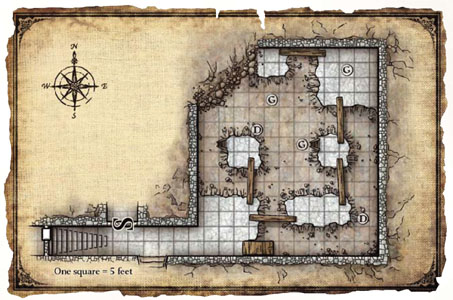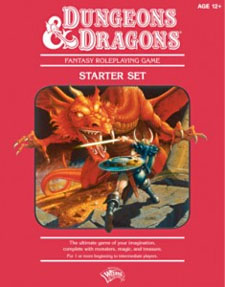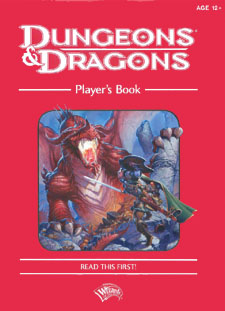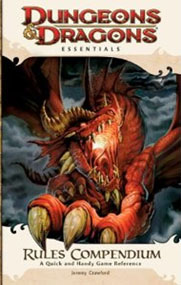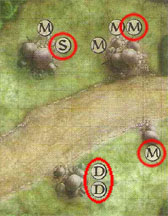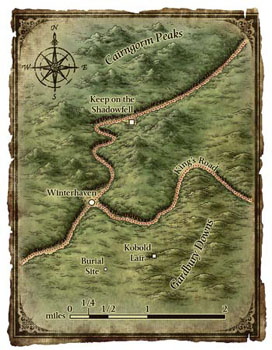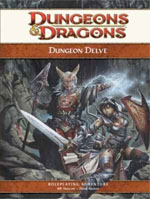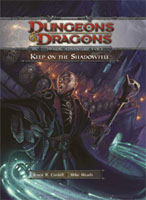 My work on converting the archives of the Alexandrian over the past few days have been something of a trip down memory lane as I go digging through material I wrote up to half a decade ago. And occasionally stumbling across comments that I don’t think I ever saw because of the broken and disjointed commenting system on the old site.
My work on converting the archives of the Alexandrian over the past few days have been something of a trip down memory lane as I go digging through material I wrote up to half a decade ago. And occasionally stumbling across comments that I don’t think I ever saw because of the broken and disjointed commenting system on the old site.
One discovery that particularly caught my eye came in response to the Keep on the Shadowfell: Analyzing the Design series I wrote as a precursor to my remix of the module in 2008. A couple people mentioned that the specific traps I had been talking about in 2008 had been “fixed to a large extent” when WotC revised the module for its release as a freebie PDF.
I was curious enough to check it out.
And discovered that they’d fixed almost nothing. The only two improvements I can identify are:
1. They allowed Arcana and Thievery checks to stack for the purposes of disabling the dragon statues. (A suggestion I’d made in my original remix notes.)
2. They made it clear when the arcane walls of the Whirlpool Trap would activate (“when a creature moves into the 4-square-by-4-square area between the statues”) and the location of the walls once they appear:
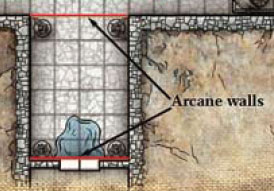
But there are two problems with this “solution”:
First, as I discussed in my original essay on the matter, you’ve designed the trap so that it can’t be affected by anyone outside of the trap. (In order to disable the trap, you have to destroy the cherubs. And you can’t attack the cherubs if they’re on the other side of the wall.) They’ve removed the explicit references in the module itself to characters doing the impossible, but that doesn’t remove the larger design concerns:
(a) It’s not fun. In general, this means you will have one character inside the trap who needs to make several attacks against the cherub vases while everyone else sits around and watches.
(b) What happens if the character trapped inside the whirlpool is killed? As far as I can tell, the arcane walls just remain in place for the rest of eternity. (They can’t come down until the cherubs are destroyed; and the cherubs can’t be destroyed by anyone who isn’t caught in the trap.) Not only does this mean there’s no way to retrieve your fallen comrade’s battered body, it also means that the only path for reaching the Big Bad Boss of Keep on the Shadowfell is now blocked by two permanent walls of arcane energy.
Second, the trap breaks the rules. The Quick-Start Rules included in the original Keep on the Shadowfell included “Barriers” as one of the types of Area of Effect:
Barrier: A barrier runs along the edge of a specified number of squares. A barrier must cross at least one edge of the origin square.
This was problematic because the core rulebooks didn’t include “Barriers” and instead included rules for “Walls”:
Wall: A wall fills a specified number of contiguous squares within range, starting from an origin square. Each square of the wall must share a side — not just a corner — with at least one other square of the wall, but a square can share no more than two sides with other squares in the wall (this limitation does apply when stacking squares on top of each other). You can shape the wall however you like within those limitations. A solid wall, such as a wall of ice, cannot be created in occupied squares.
The original version of the trap was problematic in any case because it used the keyword “wall” to describe the arcane cage, and one just had to kind of assume that it meant “barrier” if you were using the Quick-Start Rules. You’ll note, however, that the revised version of the module is clearly using the rules for a “barrier” in its diagram.
So… no problem, right? The Quick-Start rules describe “barriers” and this trap, designed to be used with the Quick-Start Rules, now clearly follows those rules.
Except (and this is my favorite bit) somebody noticed that the rules for “barriers” were outdated and should never have been published in the first place, and so the revised Quick-Start Rules designed to be used with the revised version of Keep on the Shadowfell… don’t include the rules for barriers. The entire section was cut.
(Did they bother to replace these rules with the rules for walls which were supposed to be there in the first place? Don’t be silly. Of course they didn’t.)
So you have a trap which explicitly creates walls, but they don’t follow the rules for walls… and it doesn’t really matter anyway, because the Quick-Start Rules didn’t bother including rules for walls.
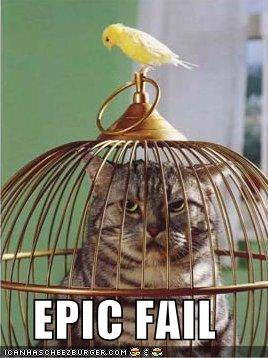

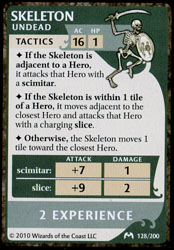 As I
As I 